By Setanta O’Ceillaigh
I have been a homeowner since I was 18 years old and I still continually shop for land opportunities in the northeastern United States. My forester education includes land surveying, and as a Tribal Forester, I was tasked with mapping the forest cover types on the reservation. While I couldn’t go walking onto private property without permission, I could use remote tools to fill in the blanks. I use this same knowledge to assess properties that I am looking into for my own use. Some of the tools I use are available to the public but are not widely known.
I have noticed on some online forums I follow that many people are asking where to find free land. One person insisted they heard about the government giving away free tracts of farmland to any applicant and was hoping also to find some secret way to be given a piece of a state or national forest. From what I could tell, they were probably talking about the old Homestead Acts which have long been discontinued. While there is no free land, it’s very possible to find affordable land. (It should be noted that land prices vary greatly from region to region.)
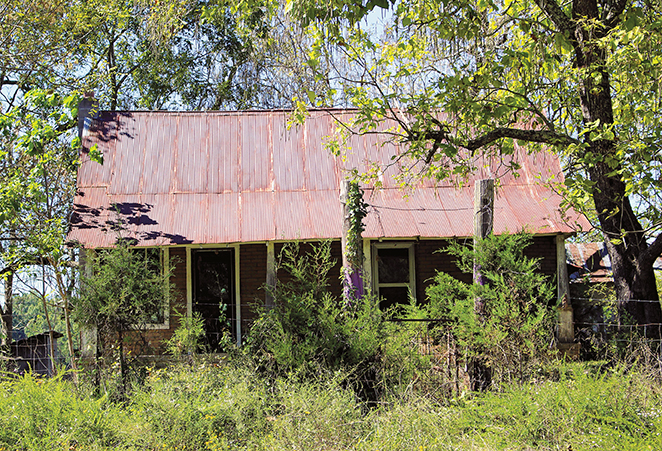
Looking for land
When looking for land, there are many routes to consider. Lots with existing infrastructure (house, barn, garage, or well) ready to use can be incredibly expensive. Near my homestead, a 300-acre dairy farm is up for sale for $1,000,000. A place with run-down infrastructure could be much cheaper. A ready-to-use tract with no infrastructure could be affordably priced, but while you could work the land right away, you would have no place to live on it. Raw land is cheaper but will need a lot of work, and junk land is limited or flawed in some way, making it all but worthless. Of these lot types, the run-down place, the ready-to-use tract, raw land, and junk land would be the most likely fit for a prospective homesteader looking to buy land.
The run-down place
The run-down place can be found anywhere — drive down a country road and you will often see lots with overgrown grass and brush, a collapsed barn, maybe a house from the 1800s, an old trailer, or an unfinished camp. The adjacent land is well maintained, but this rural eyesore hasn’t been touched in at least a decade. Similar lots could have just a nice garage and an old slab. I have seen places like this sell for $5,000-$12,000. The house (if there is one) may be beyond repair, but there will likely be other resources like a well, outbuildings, or maybe an untended orchard. Homesteading a place like this can be smooth if you are willing to work; brush-filled fields can be restored for use in a year or two and a house can be fixed cheaply with no-frills DIY projects.
The ready-to-use tract
The ready-to-use tract is often just a field or a pasture; it may be in an agricultural district (if it’s zoned for agricultural use, you can’t build on it). Buying such land means you can start working it fast and easy but you have to put all your real effort into putting up housing and other infrastructure. This type of land is usually bought by neighboring farms, but I know of several lots that have been up for sale for more than 10 years — the next farm over either can’t afford it or it’s too far away to be a practical purchase.
Raw land
Raw land is usually forested. It either hasn’t been touched in decades or has been logged, then put up for sale. As a forester, I inspected several lots that were “pillaged” for any valuable timber, then put up for sale cheap. My employers thought they might be valuable for forest resources, but they were worthless.
Know that not all forests are equal. It only takes 30 years to have large aspen/poplar trees covering an old pasture or hayfield, but it could take 150 years to get sugar maple trees of the same size. Raw land might not have been out of production for very long, but making this kind of land workable is going to be hard no matter what kind of forest is on it. Like the ready-to-use tract, there will be no infrastructure, but there might be resources to build with and maybe an old dug well or cellar hole. Lots of this type on good roads with power and other services tend to be pricey, as are lots with a river accessing it, but land with no waterfront, on dirt roads, and without power can be found for nearly a quarter of what a similar lot on a better road might cost.
Junk land
Junk land is land with severe limitations that make it worthless to just about everybody. It will take extensive work to make it marginally productive. Junk land may be seasonally inaccessible, prone to flooding, covered in rocks, a sand pit, a waste site, or just so irregular in size and shape that it’s impractical to use for anything. Junk land tends to be cheap and can be picked up for as low as $100 an acre. Most junk land I know of is under eight acres. If a lot is half junk land but the other half is usable, it can greatly drive up the value. Large tracts of junk land are rare and tend to only include areas that are barren and can’t grow anything (such as open wetland or desert). I was once offered 35 acres for $5,500 — only one acre was dry enough to build on and the rest was open marsh, with a few pockets of trees on some high spots. It was a half-mile down a seasonal dirt road without power. It might actually have been worth it, had I been willing to build a compost outhouse, a cabin on piers, a half-acre garden, and construct a solar array. Then I could have farmed fish, grown rice and cranberries, raised ducks, and hunted.
How to find land
The first place to look is the real estate section in the classified ads of all local publications. Read carefully and look for recreation-type land ads; these tend to be the raw land or junk land types. Ready-to-use land will be listed as a hayfield. Other types of land will be listed as a house and will include the acreage as a secondary concern (especially if it wasn’t an active farm in the last half century). Land described as a “camp” might include a plywood building or large camper, maybe with a woodstove, a stack of wood in a shed, and a nice piece of acreage. If the lot isn’t big enough for a commercial farm and is off-grid (no utility power available), most people think of it as a camp. Few, if any, banks will finance these lots, so these can be very cheap to purchase. Online sources such as backpage.com, craigslist, and Facebook (if there is a local town-wide trade site) are also good places to look.
Another good resource to use is realtor.com or a local MLS (multiple listing service) that pools listings from multiple real estate agents. Some real estate offices don’t participate in these pools and you can only find their ads from their office, website, or signs on the property itself. Generally, I would advise to avoid real estate agents. They work for a cut or percentage of the transaction, so some will try to sell for the most money possible and won’t put any effort into a client unless the sale price is more than $50,000. If you find a lot that interests you and there is a listing agent, then it’s best to go see that agent (the seller might live out of state and may have a local agent sell something they inherited and don’t want). Don’t deal with just anyone at the real estate office — ask for the specific listing agent who is under contract to handle the sale for the seller. It makes the whole thing less complicated. They might try to get you to work with a buying agent to represent you when dealing with a selling agent out of the same office. This doesn’t change the real estate price, but it means both agents get a cut of the sale.
The next best way to find land is a tax repossession auction. These tend to be countywide and are held only a few times per year. Some states have a statewide website listing the county auction dates months in advance and only list the available properties three weeks before the auction. Anyone bidding has to be able to pay in full within 30 days, so bank loans are generally a risky gamble. (I know of several people who got into legal trouble for not being able to honor their winning bids.) If there is a region you’re interested in, keep tabs on the auction dates and try to have a pile of money saved up; a few grand could buy a nice homestead lot. If there is an auction coming up, and you have money to back a bid, then check the listings and look for anything that might work for you. Information in a listing tends to be scant — just lot size, taxes per year, any structures, wetland status, and road and river access.
If something looks like it has some potential, then do an onsite visit and get as much info as you can. Pictures of the listing can’t be trusted. I have seen places that went up for auction that looked good in the photo but an onsite inspection revealed the back of the house was burned beyond repair. The reason it was in the auction was obvious; it burned down, the owners abandoned it, and no taxes were paid for a few years.
A few times I have seen lots go up for auction with a new double-wide trailer in the picture and included in the listing, but the winning bidder found that the trailer was removed the day before the auction, and he won a $40,000 bid for a 2-acre yard with a slab on it.
I bought a house in 2001 that was owned by a man living 700 miles away who used it as a vacation home 35 years earlier (and hadn’t looked at it in 35 years). He died, and since no one claimed it as an inheritance, the $300 due in back taxes was not paid and the property was auctioned off (I won the bid for $4,000).
A friend of mine recently paid $17,000 for a 60-acre lot with mature sugar maples and river frontage. At the same auction, I was outbid on a 10-acre lot with an 8-acre hayfield and 2 acres mixed hardwood (winning bid was $4,500). While I wanted that field, I would not risk bidding more than I knew I could pay.
Don’t count on tax auctions for buying land, but if you have the funds, and there is a lot you are interested in (after doing your research) and there is no one else who wants it more, then tax auctions can be a way to buy homestead property. Remember, it’s a gamble and you’ll need a good poker face during the auction.
The last way I recommend buying land is through private sale. This could be by word of mouth or a “for sale by owner” sign out front. Generally, these opportunities are not open or advertised to everyone. This can be where the best deals are, but unless you’re in the right place at the right time or know the right person, this probably won’t be open to you. If you have funding and there is an area you really like, then gas up your car and drive around looking for vacant houses. If you find a few places that might work for you then look up who owns it (a real estate agent could be useful here) and let them know you are interested in the property and ask if they would be interested in selling it. Sometimes people are not actively trying to sell a run-down place their uncle left them but when a prospective buyer shows up, they will sell without a second thought.
Other considerations
There are a few other things to consider in doing research prior to purchasing property: neighbors, maps and surveys, history, and existing resources.
Some neighbors can be saints, good friends, or lucrative business contacts; others can make you feel like you moved into the ninth circle of hell. Do not listen to real estate agent advice when getting neighborhood information! I cannot stress that enough. I was once brought to financial ruin by not assessing the neighborhood before moving into a high crime slum. Read the local paper for arrest records, obituaries, and the latest local news. Meet close neighbors in person if you can.
If you have a family, check out the local schools. If you attend church, see what services are in the area. Identify the closest fire departments and other emergency services. Identify postal routes and post office locations. Identify gas stations, convenience stores, grocery stores, lumber yards, feed stores, wifi hotspots, restaurants, transfer stations, and hardware, clothing, and department stores. You may find some services are simply nonexistent in the area.
Google Maps, Google Earth, and Bing Maps can be a huge help in scouting a property; if there are good close-up pictures you can even spot fence lines. You can use this resource to assess vegetation, wetlands, find junk piles, old foundations, and trails before even setting foot on the property. You can also get a good idea of the neighbors by their land use.
A combination of on-site inspection and aerial photos can give you an idea of what potential a property has to offer and what kind of work you will need to put into it. Besides any infrastructure, you should also assess vegetation. What kind of trees are on the property, how big are they, what condition are they in, and what kind of products can you use them for? A commercial-minded farmer has no interest in the trees on a property, but a homesteader should. Some of the most valuable trees take up to 100 years to become very productive. Having one of these trees already at a good size on the property potentially means you will see use from it as opposed to planting a seedling for your great-grandkids. The most valuable trees to look for are nut producers like butternut, walnut, hickory, oak, and beech. Fruit trees such as apple, pear, plum, peach, and cherry could produce good harvests in a few years as opposed to 10 or more. Even a few mediocre trees are better than none. Look for grapes, blueberries, hazelnuts, and raspberries. Ash, elm, and similar trees could produce good firewood; aspen/poplar can become a lot of low value firewood and cheap construction material; and birch and maple indicate the potential for sugar production. Pines and other softwood can be milled, and cedar made into posts. If you already have some decent trees, you can start to get products out of them quickly.
Topography maps should be available from the United States Geological Survey (USGS). The USGS spent more than 100 years mapping all the soils in the U.S. and making topographic maps. The maps are freely available on the internet or can be purchased as a paper map for the printing costs. Such maps can be useful in assessing a homestead property by showing slopes, seasonal streams, areas prone to flooding, old stone fences, house sites, obsolete roads, and small-scale quarries. These maps also indicate state and federal land close by where resources could be harvested. The topography can indicate where to set up solar arrays (a nice south-facing slope), where to put a shallow well, and where to put an outhouse so it won’t contaminate the water.
The USGS website has a web tool called the Web Soil Survey (WSS). This works like Google Maps to locate a property you want data for, then lets you zoom in and create an area of interest (AOI). You can define the exact property line if you want or include the area around it (see what’s uphill if you’re on a slope). The soil survey will give you a map of soil types, and their general description. This can give an idea of what the soil can be used for. Sand loam will be easier to plow and drain off excess rain, clay soils will be harder to plow and will flood more often, and stony soils may be impossible to plow and be limited to pasture. Detailed soil info can be selected for a personalized soil report (free to download as a PDF). It gives info about the topsoil, subsoil, water table, common agricultural use for that soil type, and construction suitability (so you don’t build another leaning tower of Pisa). Some of this information will be hard to read without a technical background, but since it’s a free resource, it’s always worth assessing for whatever knowledge you can use.
The USGS is not the same as a boundary survey. Any internet maps that show property lines are just a general idea of where the line is but it can vary up to 10 feet. Property lines can only be accurately determined by someone with surveying training and good equipment. They will use the information found in a deed or title to determine the boundaries and identify them in the field. A title search looks up deed information going back 100 years for deed changes, sales, and partitions for the property in question and that of adjacent properties. If there is no overlap in the boundary description and no liens, the title is clean.
A licensed surveyor’s measurements are absolute and are legal documents in court. Surveyors need to meet very high standards to be licensed and stay licensed, so they charge a lot for their services. But if a surveyor has marked the boundary, there can be no dispute as to where it is.
If nobody has had a survey done then a GIS technician is probably the one who made the maps. These technicians base their maps on the information from titles held in the local courthouse. Like viewing close-up pictures on Google Maps, they can get the lines very close without going onto the property but their survey is not a legal document and lines can vary a little bit. If neither neighbor has a survey then it’s basically a close guess and it’s best to assume that there is up to a 10-foot-wide boundary line.
If you have a clean title and can identify the boundary within a few feet based on public maps, then it’s probably good enough as long as neighbors aren’t too fussy about it. Stone fence lines on the property line going back 100 years or more are fairly reliable as are some trees that are long-lived. If there is a row of oak along the line significantly older than everything else in the area, then that is a good indicator of the line.
Barbed wire fence should not be trusted since it’s been cheap and easy to put up since the 1880s. A lot of old farms didn’t bother replacing an old fence. Instead, they just put a new one up a few feet over. I have seen five barbed wire fences covering an area 20 feet wide — the oldest was on the line and was almost impossible to find the remains. The others were much newer and were put up about 25 to 30 years apart.
The last thing to assess is the historic use of a property. While old farmers didn’t think in terms of soil reports and topographic maps, they did think about working the soil, and chose the best uses through trial and error. If it was too rocky to plow but could be cleared to make it flat, then they could hay it. If they could plow it, they grew crops on it. If it was too rocky to hay, they put pasture in. If it was too wet, they might have drained it or just ignored it.
Sometimes you can get historic maps from the USGS dating back to the 1930s. Google Earth can often show these historic images. Looking back 30, 50, or even 80 years, you may see the land use change over almost a century. If you see row crops up until the ’70s, then it’s a good indicator that the soil can be tilled again. If it shows a half acre of trees surrounded by hay fields, then that’s likely a spot that was too difficult to work on, so they ignored it. Knowing what a property was used for historically can give you a good idea of what it can be used for in the future.
Financing
After finding a piece of land to homestead, decide how you’re going to pay for it. The best advice I can give is to buy it out of pocket debt-free. Savings are the best way to invest in property. If there is no bank involved, the price will be in full plus legals (closing costs, title transfer fee, taxes, usually $1,000 minimum; more if you want a title search to make sure it’s clean). This can make buying land a daunting challenge — having $10,000 up front may be hard, but the benefit is that the land is yours. It will require at minimum a property tax and a school tax to maintain ownership. Other costs may depend on municipal requirements (my first house had a village sewage system and I had to pay $300 a year for it even if I didn’t use the system). Taxes are yearly and should not be too hard to pay. This gives you the full force of your income afterwards to invest in improving the land and making it work for you.
One way to raise funds and reduce moving expenses is to set aside only what will be needed on a homestead and sell everything else you have. This might raise a few hundred dollars or a few thousand in a week or two. Remember that portable stuff loses value fast and can be replaced. Tools that can be used to make money or prevent further spending are worth keeping.
The common way to buy land is with a mortgage loan. This essentially means the bank will buy and own the property and you buy it from them in monthly payments until it’s paid in full. If you don’t pay, you lose the property and they sell it to someone else.
With a mortgage, you can buy property that you can’t afford out of pocket now, but you are assuming you can make all of the payments later. This can be risky and can result in financial ruin if you count on your current job to fund payments — if you lose your job, you’ll lose your homestead.
If you own the property debt-free and you lose your job, you still own the homestead and just need to scale back spending to match what you can still afford after the minimal upkeep of taxes. If you can reasonably expect to be employed for the loan duration to make all the payments, a mortgage loan could work.
With a mortgage, you will need a down payment to show the bank you are financially stable and can reasonably afford what you are buying, usually 20% of the whole price. Another consideration is that banks will only finance mortgages on property they can resell if you default; property that is good for cheap homesteading is usually not good for the bank. Things like off-grid, dug well or no well, and outhouses will almost always turn a bank off and they will deny a mortgage loan.
Personal loans from a bank are another matter but won’t expand your budget as far as a mortgage can. Personal loans require no down payment and no collateral, but they will require a good credit rating and will generally have higher interest rates. The riskier the loan is for a bank, the higher the interest. Watch out for loans that have “interest only” payments with a big balloon balance due at the end of the loan period. If you have good credit and a source of income to pay back a loan in a reasonable time (less than a year) or have some way to verify your ability to pay, then you could potentially raise $1,000 to $10,000 with a personal loan.
If you take a personal loan to buy property, try to pay it back as fast as you can. Use the property to satisfy the loan (harvest timber or firewood when cleaning it up and sell that to raise funds to pay off the loan). I know a few people who used personal loans from one bank to make the down payment on the mortgage at another bank.
Personal loans can also be raised from people you know, so ask around. When I was trying to raise funds for a real estate purchase, I called up a friend who buys 30 cords of wood every year from me. He offered to front the money for a 20-acre woodlot in exchange for half the firewood that would come off it. The sale never happened because there was a wetland restriction on the property, limiting the kinds of work that could be done on it, so we backed out. Another friend of mine took a “mortgage” loan from his aunt and put his old trailer up as collateral (he was renting out the trailer and the rental payments covered the loan payments). This may require a good reputation, a lot of creativity, and knowing just the right person, but financing is out there for those willing to look.
Personal loans from other people (no banks involved) may be an option, but even then I advise to always have things in writing and sweeten the deal with some kind of collateral to make it easier to get the loan. My deadbeat uncle once asked me to loan him $1,000. At the time, that was more than three months of my savings and, knowing that he never pays anyone back, I required that he provide $2,000 worth of stuff as collateral. I asked him to sign an agreement that if he does not pay the loan back I get to keep that stuff or sell it to satisfy the loan. Since he never planned to pay the loan back, he didn’t agree to it and never asked for another loan from me. As with any loan, be sure of how you will pay it back and only take risks you are willing to accept.
Credit cards can be a minor source of unsecured loans, but they will probably be limited to $1,000 and unless you have the rest of the money debt-free and have exhausted all other avenues to find money, credit cards are probably more trouble than they are worth.
Another type of financing that could be considered a private loan is owner financing or land contracts. A land contract is a legal agreement between two people where payments are made directly to the seller. The seller maintains ownership of the property until the debt is paid in full. After the debt is paid in full the deed will be transferred. Since this is an agreement between two people, the contract can have all kinds of stipulations and restrictions. Be sure it addresses closing costs, who pays taxes, late payments (if permitted at all, a contract might void the sale and forfeit all previous payments if a single payment is late), interest rates, and land use limitations. Once a contract is signed by both parties, it is legally binding and both buyer and seller should have a copy, and both should keep very good records.
Final thoughts
While there is no free land or secret programs to buy tracts of public land, using these unorthodox ways and tools will help homesteaders get cheap land. Buying homestead property is more an art than a science, and every property will have its own very specific traits.
Knowing what to look for will go a long way towards making a successful homestead.


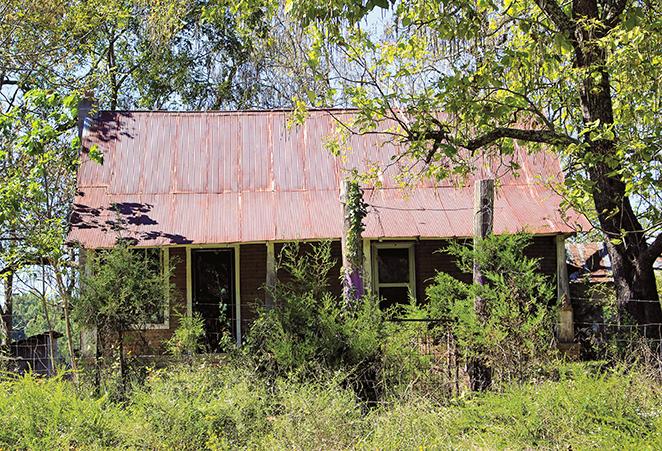






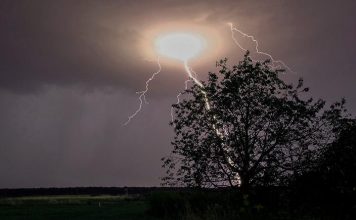
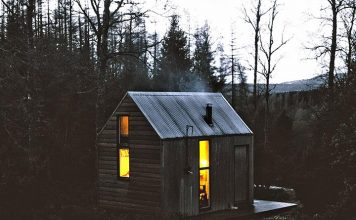
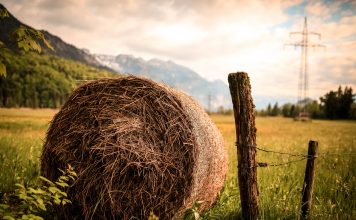

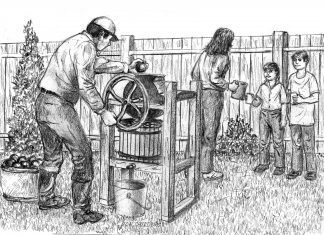
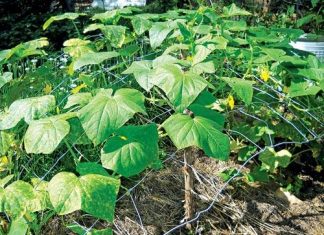
I remember reading a true story in BHM about a couple whose property wasn’t definitely outlined by fence or even walking the property before purchase, nor searching for property markers in the ground. Next thing they knew, the next door neighbor had encroached, unknowingly, since there were no boundary lines, and cut their trees down, thinking he was on his own property! It pays to find out absolute property lines!
Plenty of good information here…thanks